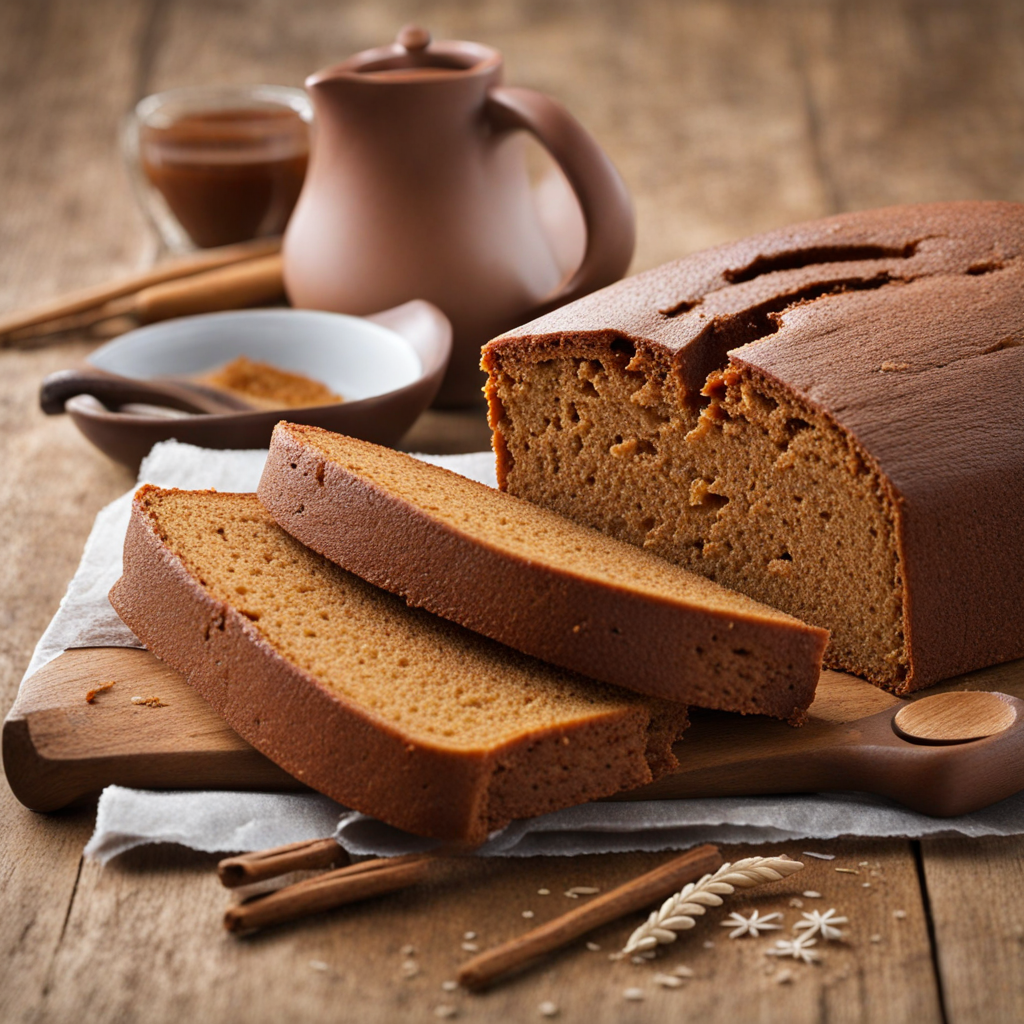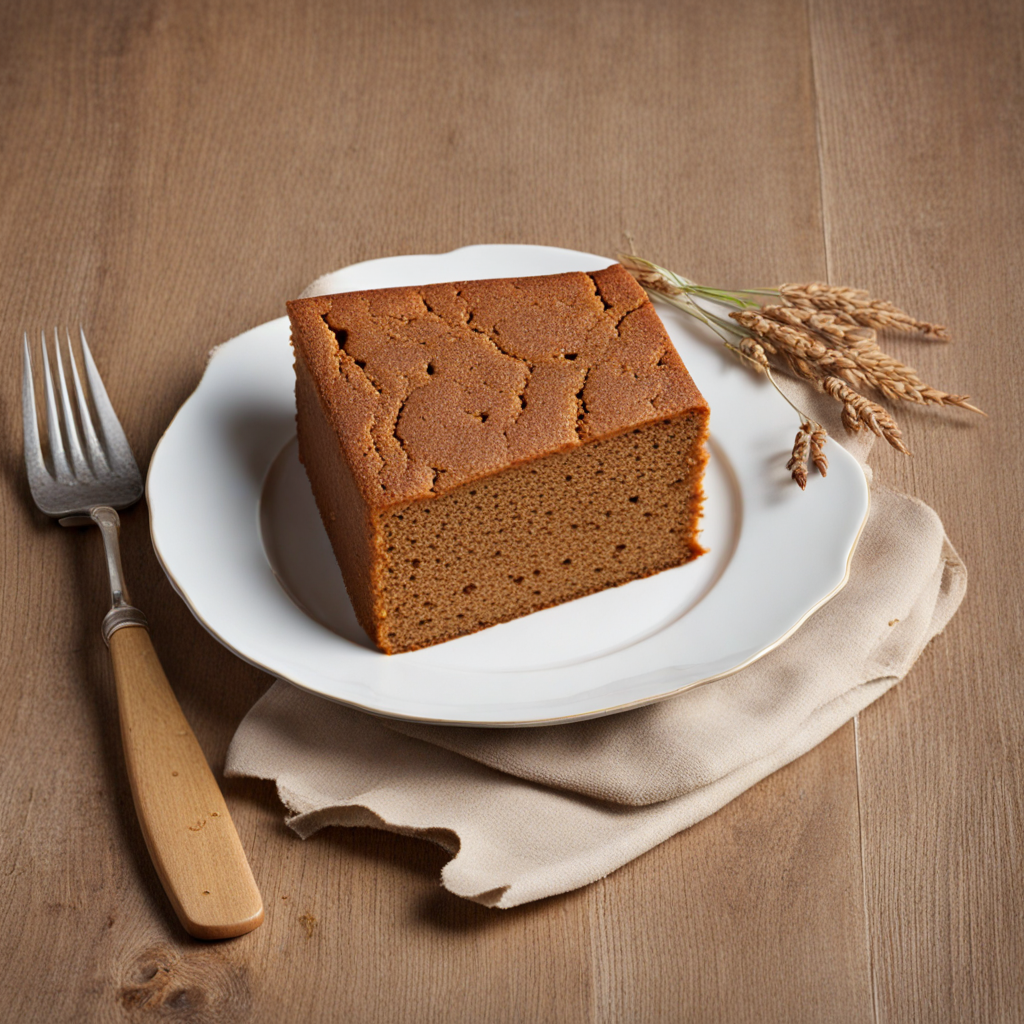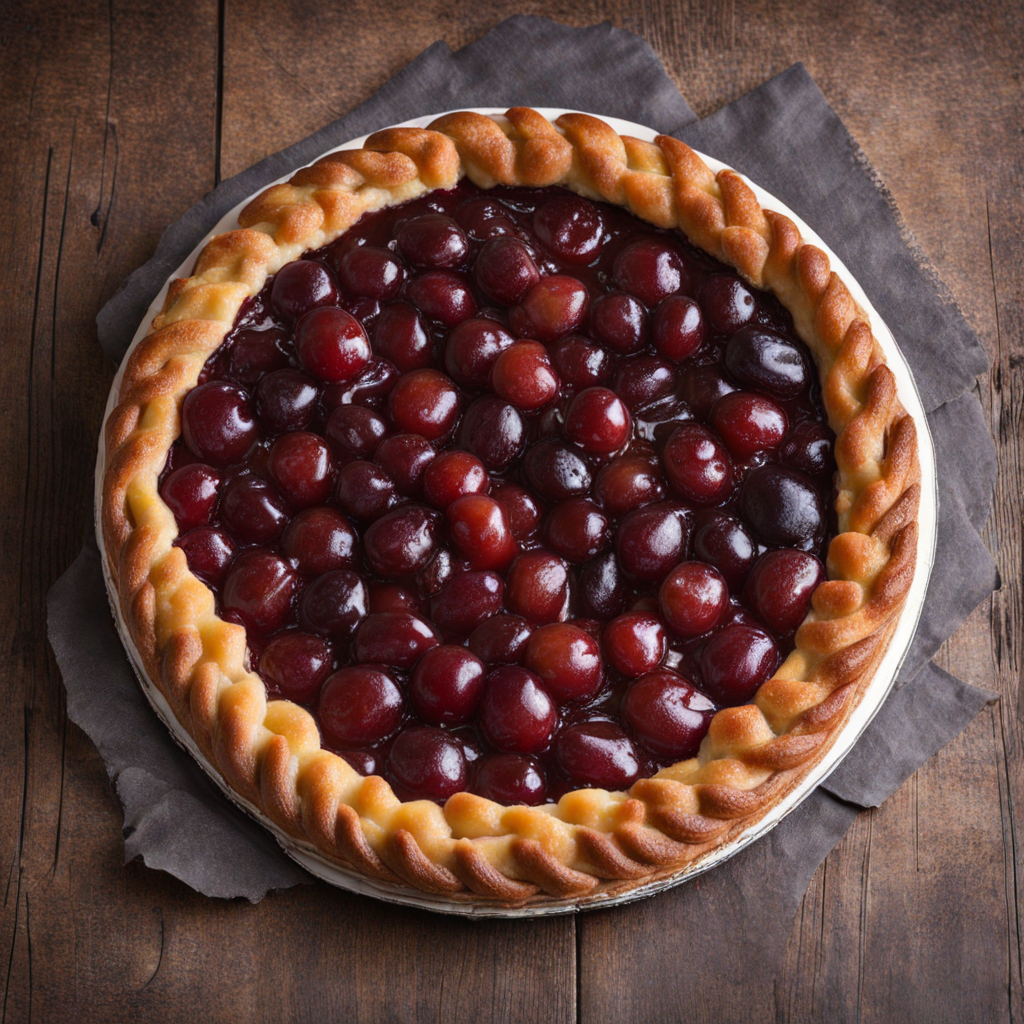Ontbijtkoek
Ontbijtkoek, a traditional Dutch spiced cake, is a delightful treat that offers a unique combination of flavors and textures. Its name literally translates to "breakfast cake," reflecting its common pairing with morning coffee or tea. The cake is typically made from rye flour, which gives it a dense yet moist consistency, and is sweetened with honey or sugar. The use of a variety of warm spices—such as cinnamon, ginger, and cloves—creates a rich aroma that envelops the senses, making each bite a comforting experience. One of the defining characteristics of Ontbijtkoek is its versatility. While it is delicious on its own, many enjoy it spread with butter or topped with slices of cheese, which adds a savory contrast to its sweetness. Some people even pair it with fruit preserves or Dutch licorice for an extra layer of flavor. The cake's spiced profile makes it a perfect companion for breakfast, but it can also be enjoyed as a snack or dessert throughout the day. In addition to its delightful taste, Ontbijtkoek carries a sense of tradition and nostalgia within Dutch culture. Often found in households and bakeries across the Netherlands, this cake is not only a staple but also a symbol of comfort and togetherness. Each bite transports you to a cozy Dutch kitchen, where the warm spices and sweet notes tell a story of heritage and culinary craftsmanship. Whether you’re a seasoned food enthusiast or just beginning your culinary journey, Ontbijtkoek promises to deliver an unforgettable taste experience that reflects the heart of Dutch cuisine.
How It Became This Dish
The History of Ontbijtkoek: A Dutch Culinary Tradition Introduction: The Essence of Ontbijtkoek Ontbijtkoek, a spiced cake traditionally enjoyed in the Netherlands, is more than just a breakfast item; it embodies a rich tapestry of cultural history, culinary evolution, and societal change. Known for its unique blend of spices, often reminiscent of gingerbread, and its moist, dense texture, ontbijtkoek has become a beloved staple in Dutch households. While it may seem like a simple cake at first glance, its origins, significance, and the ways it has developed over time tell a much deeper story. Origins: A Culinary Legacy The roots of ontbijtkoek can be traced back to the Middle Ages, a time when the Netherlands was experiencing significant agricultural and trade developments. The use of spices became more widespread due to trade routes established by the Dutch East India Company, which brought exotic flavors from Asia and the Middle East into European kitchens. This era saw a growing fascination with sweet and spiced breads and cakes, and ontbijtkoek emerged as a product of these evolving tastes. The term "ontbijtkoek" translates directly to "breakfast cake," suggesting its primary use as a morning meal accompaniment. Traditional recipes often featured a combination of rye flour, sugar, and a selection of spices, including cinnamon, cloves, and nutmeg, which were incorporated into the batter. Honey or molasses provided sweetness and moisture, while the rye gave the cake a unique, earthy flavor. Cultural Significance: A Symbol of Dutch Identity Ontbijtkoek holds a special place in Dutch culture, transcending mere sustenance to become a symbol of national identity. It is commonly associated with the concept of gezelligheid, a Dutch term that encompasses the idea of coziness, comfort, and togetherness. Families often enjoy ontbijtkoek during breakfast or as a snack, typically served with butter or cheese. This simple act of sharing food fosters connection and warmth among loved ones. Moreover, ontbijtkoek is often enjoyed during festive occasions, such as birthdays and holidays, where it is sometimes adorned with icing or served alongside other traditional Dutch treats. Its presence at the breakfast table has made it a versatile food item, adaptable to various contexts and occasions, further embedding it into the cultural fabric of the Netherlands. Evolution Through the Ages: From Homemade to Industrial Production As the centuries progressed, the preparation and consumption of ontbijtkoek evolved significantly. During the 19th century, with the advent of the Industrial Revolution, many traditional foods experienced a shift from home-baked goods to commercially produced items. This change was partly due to urbanization, as people moved to cities and had less time to prepare food from scratch. In the late 1800s and early 1900s, commercial bakeries began producing ontbijtkoek on a larger scale. This industrialization led to the introduction of standardized recipes and ingredients, making the product more accessible to a broader audience. Brands such as "Peijnenburg" and "Bolletje" emerged, bringing ontbijtkoek to supermarket shelves across the Netherlands. This mass production allowed for greater consistency in taste and texture, but it also sparked debates about authenticity and the loss of traditional culinary practices. Despite these changes, many families continued to pass down their homemade recipes, ensuring that the cultural significance of ontbijtkoek remained intact. This duality between traditional and industrial practices reflects a broader trend in the food world, where heritage foods navigate the complexities of modernity while maintaining their roots. Modern-Day Ontbijtkoek: A Culinary Revival In recent years, there has been a resurgence of interest in artisanal and homemade foods, leading to a revival of traditional recipes like ontbijtkoek. As consumers become more health-conscious and seek to reconnect with the origins of their food, many are turning to homemade versions of this beloved cake. This trend has prompted bakers to experiment with new ingredients, such as whole grains and natural sweeteners, while still preserving the essential spices that define ontbijtkoek. Furthermore, the global culinary landscape has become increasingly interconnected, with international influences inspiring innovative adaptations of traditional recipes. Today, you can find variations of ontbijtkoek that cater to various dietary preferences, including gluten-free and vegan options, allowing more people to enjoy this Dutch classic. Culinary Versatility: Beyond Breakfast While ontbijtkoek is traditionally associated with breakfast, its versatility has allowed it to find a place in various culinary contexts. It is often served as a snack, paired with cheese or fruit, and can be crumbled over yogurt for a delightful twist. It also serves as an ingredient in desserts, where it can be transformed into a crust or incorporated into cakes. In addition, the cake has gained international recognition, appearing in specialty food shops and Dutch-themed restaurants worldwide. This exposure has helped to introduce the flavors of the Netherlands to a global audience, allowing ontbijtkoek to evolve into a culinary ambassador of Dutch culture. Conclusion: A Timeless Tradition The story of ontbijtkoek is a testament to the enduring power of food as a cultural symbol. It reflects the history, traditions, and values of the Dutch people, serving as a reminder of the importance of community, history, and shared experiences. As we continue to explore the evolving landscape of food, ontbijtkoek stands as both a cherished relic of the past and a vibrant part of contemporary culinary culture. In each bite of this spiced cake, one can taste the essence of the Netherlands—a blend of rich history, cultural significance, and an enduring love for the simple joys of life. Whether enjoyed at breakfast, as a snack, or as part of a festive celebration, ontbijtkoek is not just food; it is a slice of Dutch heritage that continues to thrive in kitchens around the world.
You may like
Discover local flavors from Netherlands







